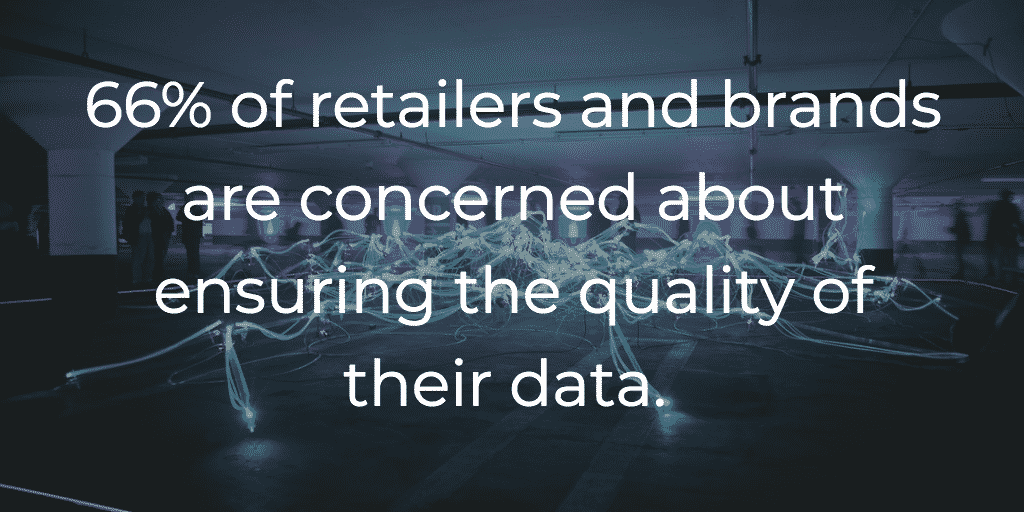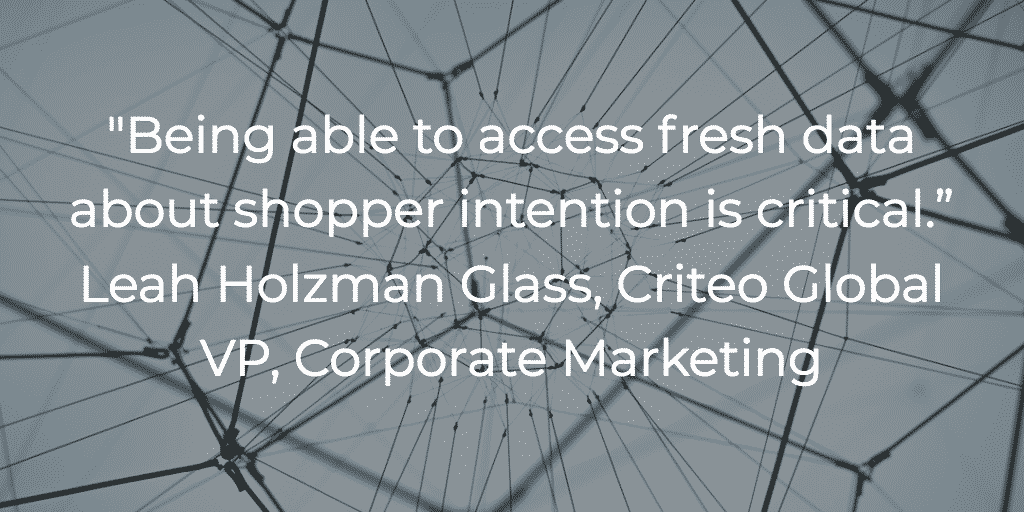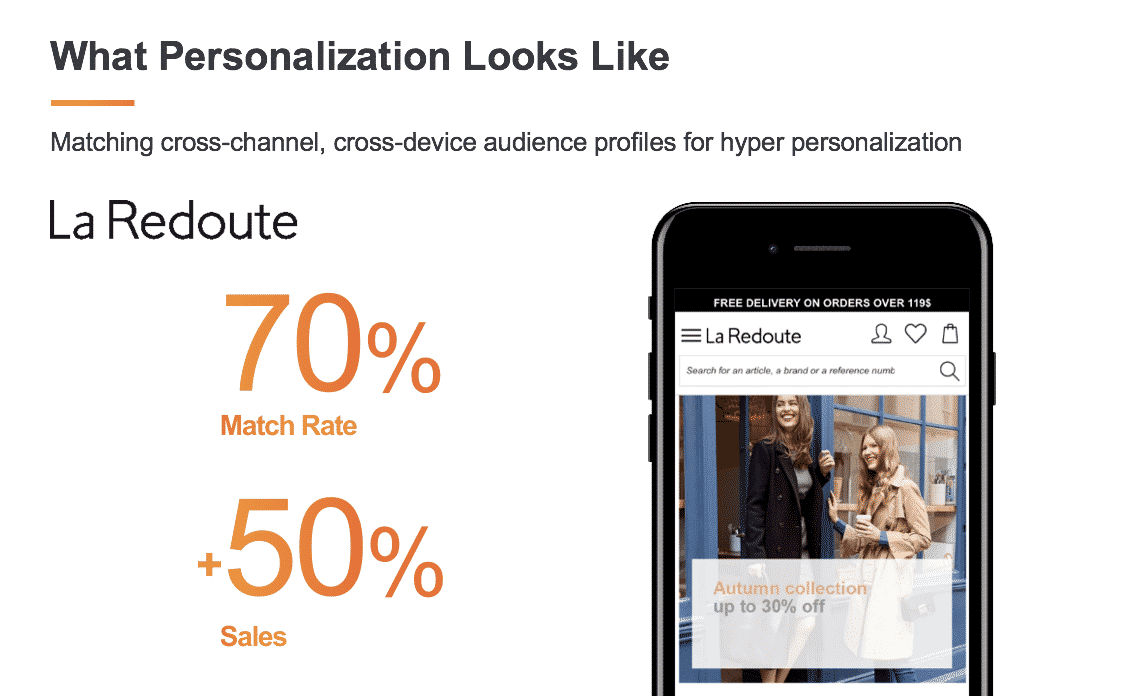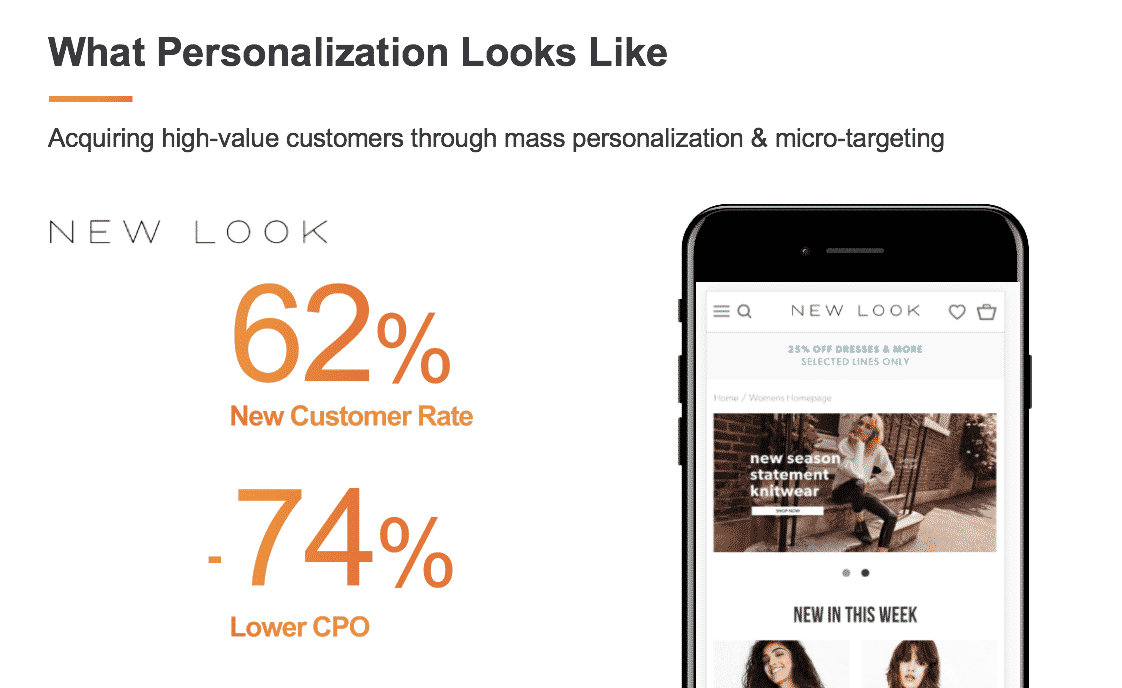Back in October we debuted exclusive research in partnership with Forbes Insights on how 500+ marketing execs from brands and retailers are working on data strategy, challenges, and opportunities.
We followed up the release of the report with a webinar featuring Criteo’s VP of Corporate Marketing Leah Holzmann Glass and Forbes Insights’ Chief Insights Officer Bruce Rogers.
The webinar, “The Collaboration Imperative: How Retailers & Brands Can Win in 2018,” takes a deeper dive into the Forbes report findings. Here is what Glass and Rogers had to say about the research:
Understanding the Data Landscape

“The Commerce Data Opportunity” showed exactly what’s happening in the data landscape:
- Almost 4 out of 5 brands and retailers use customer data as a part of their business strategy – and are successfully collecting and using data across channels and phrases of the buyer journey.
- Brands are concerned that physical-digital giants will limit access to their products, and retailers’ top worry is that this trend will cause consumers to turn away from smaller retailers.
- Pooled data assets are a way to gain a competitive edge in this changing market. Three-fifths of those surveyed are already collaborating on data, and 7 out of 10 of those companies are happy with their agreements.
“The good news is that 4 out of 5 of the people we talk to are certainly using customer data,” says Rogers, “Data and analytics is at the center of almost all of their digital transformation journeys and that’s nowhere more important than in the retail space.”
But the question remains: how can you better engage with customers through that data?
Data Management Challenges & Opportunities
“There is some bifurcation in how brands and retailers see the world,” says Glass, “But the challenges of understanding data sets are the same for both.”
The report examines the top three data management challenges for retailers and brands, with 66% of retailers and brands concerned about ensuring the quality of their data. Retailers are overall more concerned than brands and manufacturers about ensuring data quality, but less concerned than brands about collecting the amount of data needed to better understand their customers.
This could be because retailers have transactional data that brands don’t have, since shoppers are interacting with brands in stores, on computers and across devices.
“What shoppers are doing in the moment really matters,” states Glass. “Being able to access fresh data about shopper intention is critical.”
Which adds another layer of complexity to an already complex situation.
Owning Omnichannel, Piece by Piece
In order to connect the dots and deliver a seamless omnichannel shopping experience, businesses need access to consistently refreshed intent data. This is the data that tells you what shoppers are doing in the moment.
“You also need technology solutions to apply and organize that data efficiently,” says Glass, “These things need to come together to deliver an omnichannel experience.”
Glass cites Amazon as the biggest competitor for most brands and retailers. “Amazon offers compelling experiences across channels and they use their tech to deploy that data effectively.”

And many companies are feeling the challenges coming from Amazon and other tech giants, which control massive amounts of shopper data behind walled data gardens.
Half of the marketing execs interviewed by Forbes Insights felt that tech giants limited access to not only the company’s products, but also customers (41%). And 38% of respondents said that walled gardens allow garden owners to dictate terms and services.
So what’s a non-tech giant retailer or brand to do?
Personalization in the Wild
It all comes back to data. And not just any kind of data, granular data.
“We want to connect with shoppers and create personalized relevant experiences,” says Glass. “You need to have a lot of data and it needs to be granular. Even if you do have this level of data, as Amazon does, you need this data to be continually refreshed and you need to activate it to generate sales and grow your business.”
Exactly how does it work?
Glass cites two success stories of companies who, using Criteo’s data pool and technology, increased sales and customer reach.

French multi-channel retailer La Redoute partnered with Criteo to match cross-channel, cross-device audience profiles for hyper-personalization for a 70% match rate and a 50% increase in sales.

New Look, a British global fashion retailer, wanted to engage with a wider audience. The team sought to bring relevant new shoppers to convert into customers and used Criteo’s data and technology for mass personalization and micro-targeting. They increased new customers by 62% and lowered their CPO by 74%.
The Collaboration Imperative
Our research with Forbes Insights found that marketing execs understand the importance of data, but are challenged by fragmentation and walled gardens alike.
Imagine a world where you could pool your data, and gain access to data from other retailers and brands. Then, using technology to identify opportunities within this larger data pool, you can deliver more customized, relevant offers to shoppers.
That starts by pooling non-identifiable data assets, which is why three-fifths of the marketers surveyed said they already have some kind of data collaboration initiative in place.
According to respondents to the Forbes Survey, there are three key benefits to pooling data:
- 72% of respondents believe it will lead to increased revenue.
- 65% believe it will lead to increased profits.
- 56% believe it will increase customer satisfaction.
The Age of Commerce Marketing
In a connected world, online is offline. Brick and mortar isn’t dead, but it’s changing. And any retail strategy should be data-driven. By matching shoppers across channels and using data to personalize the experience, you can create a commerce marketing strategy that offers relevant content and offers at every touchpoint.
There are three central pillars to a commerce marketing strategy:
- Connect – connect online and offline experiences.
- Build – build the relationship across the whole shopper journey rather than on any particular channel or device.
- Measure – measure performance, which directly drives sales and profits.
As Glass states, “Commerce marketing is about purchasing. You have to be driving sales, and that’s the measure of success.”
Watch the webinar here and download the full report below!






















